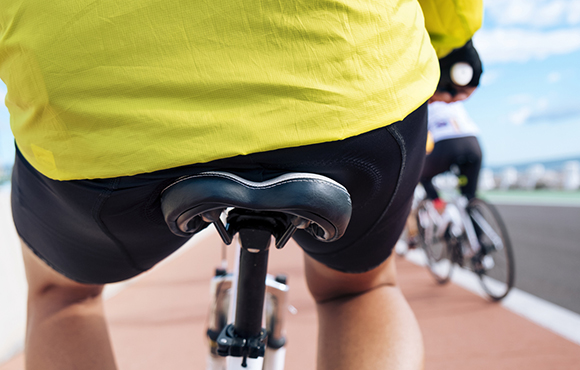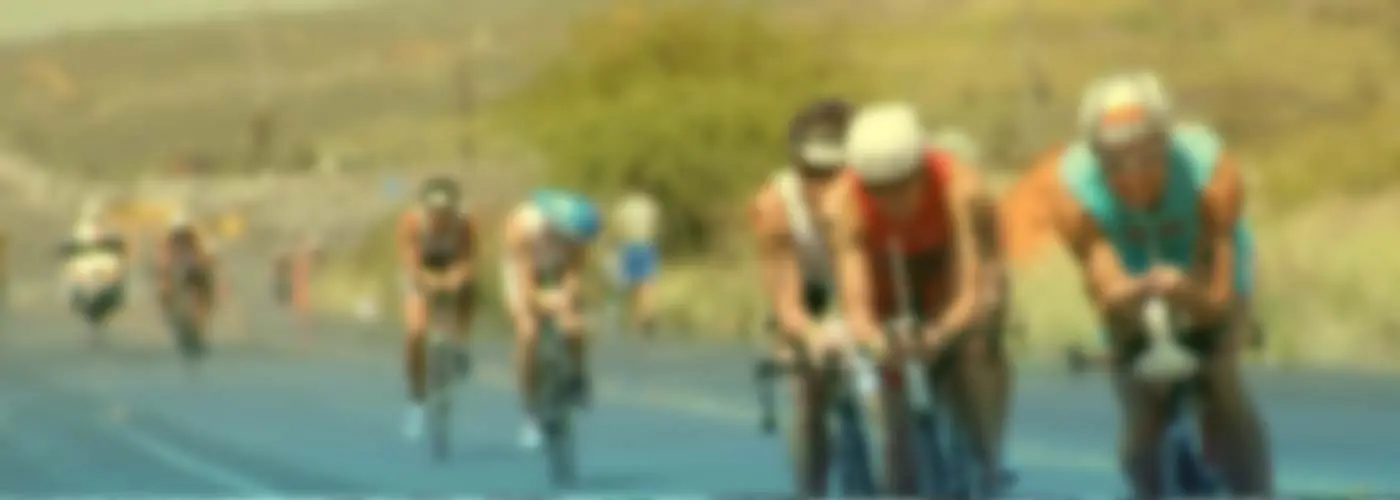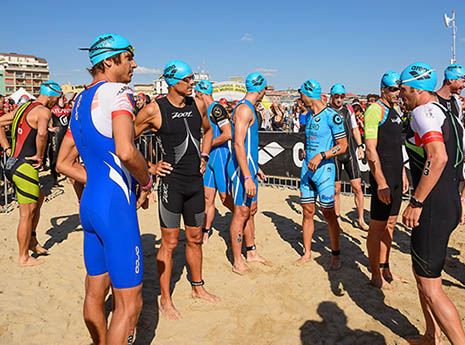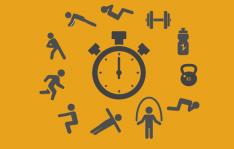Have a question you're too embarrassed to ask? You aren't alone. We've answered some of the most blush-inducing questions about this quirky sport we know you'll come to love.
Do people really pee on themselves?
1 of 11
Whether it's peeing in your wetsuit, on your bike or while running, it's convenient and saves time in a sport where seconds can mean the difference between a podium spot and fourth place. There are always bathrooms in the transition areas and out on the course, though, so if you're only trying to finish, there's no reason to wet yourself. But if you do decide to give it a go (no pun intended), make sure nobody's around when you spring a leak—especially on the bike.
Find:
Your Next TriathlonWhy am I so afraid of open water?
2 of 11
This is one of the most common fears beginning triathletes have to overcome. Just like a fear of the dark, the sense of unknown and isolation that open water may stir up can cause some serious prerace jitters. You can help alleviate some of the uneasiness by starting the swim at the back of the pack to stay out of the way of faster swimmers. Also, don't be afraid to flip onto your back and float (or grab a kayak) if things get overwhelming.
Find:
Your Next TriathlonWhat's up with people running and jumping on their bike out of transition?
3 of 11
These crazy athletes are doing what we call the "flying mount." They have their shoes already clipped into their pedals and they run out of T1 barefoot. As they approach the mount line, they quickly throw their leg over the saddle and catch the pedals in a motion that looks like a jump. After a few pedal strokes, they slide their feet into their shoes, tighten them down and head out onto the course. This time-saving technique should be reserved for experienced triathletes only, and it should be practiced before any attempt on race day.
Find:
Your Next TriathlonWhy do wetsuits fit so tightly?
4 of 11
A properly fitting triathlon wetsuit is one of the most important pieces of gear in your arsenal. You want your wetsuit to be snug enough to be formfitting, but not so tight as to constrict your breathing or limit your range of motion. The ideal fit can help eliminate chafing and is more hydrodynamic, meaning it cuts through the water more efficiently.
Find:
Your Next TriathlonHow can I find my bike in T1 easier?
5 of 11
There's nothing more disorienting than exiting a tough swim and running up the beach. As you set up your transition area, look for a rack near a sponsor banner or light pole—this makes it easier than counting racks or trying to find your number. You can make it even easier yet by having a brightly colored helmet, bar tape or towel included in your setup.
Find:
Your Next TriathlonWhat's the best way to stop all the chafing?
6 of 11
Moisture, repetitive motions and heat are never a good combination. Before you put your tri suit and wetsuit on, use Vaseline or Body Glide on any areas that may cause a problem. This generally includes the neck, underarms, between the legs, private parts and around your ankles. Don't be shy—the more, the better.
Find:
Your Next TriathlonSports nutrition makes my stomach hurt. What are other good options?
7 of 11
If too many gels upset your stomach, you aren't alone. Sports nutrition doesn't work for everyone, and it's not uncommon to see athletes snacking on Swedish fish, bananas, potato chips or jelly beans as an alternative. Experiment with simple, salty and carb-based options during your training efforts to make sure your body agrees with them before race day.
Find:
Your Next TriathlonIs doggy paddle legal?
8 of 11
While not especially effective, the answer is yes! Most beginner triathletes complete their first swim by utilizing a combination of freestyle, backstroke and doggy paddle. Finishing is all that matters, so take your time and make sure you're comfortable as you progress through the swim course.
Find:
Your Next TriathlonWhat is the difference between a tri bike and a road bike?
9 of 11
Triathlon bikes generally have a more aggressive geometry and special bars designed to make you as aerodynamic and efficient on flat ground (or rolling hills) as possible. They also often have deeper tubing to cut through the wind and a more forward-oriented saddle to provide more power to your pedals. Road bikes, on the other hand, are designed for varying terrain, with a more upright geometry and better handling capabilities. Remember that you can and should use your old road or mountain bike for your first few sprint and Olympic triathlons.
Find:
Your Next TriathlonWhat if I need to poop during the race?
10 of 11
The best way to avoid this situation entirely is to wake up early enough to have your coffee and breakfast before the race, and allow yourself time to poop before the gun goes off. Ideally, you can go No. 2 in the hotel room, but all races will have facilities available in the transition area. If you've swallowed too much ocean water or a gel doesn't agree with you, most aid stations will have a porta potty or two for such emergencies, as well.







Discuss This Article